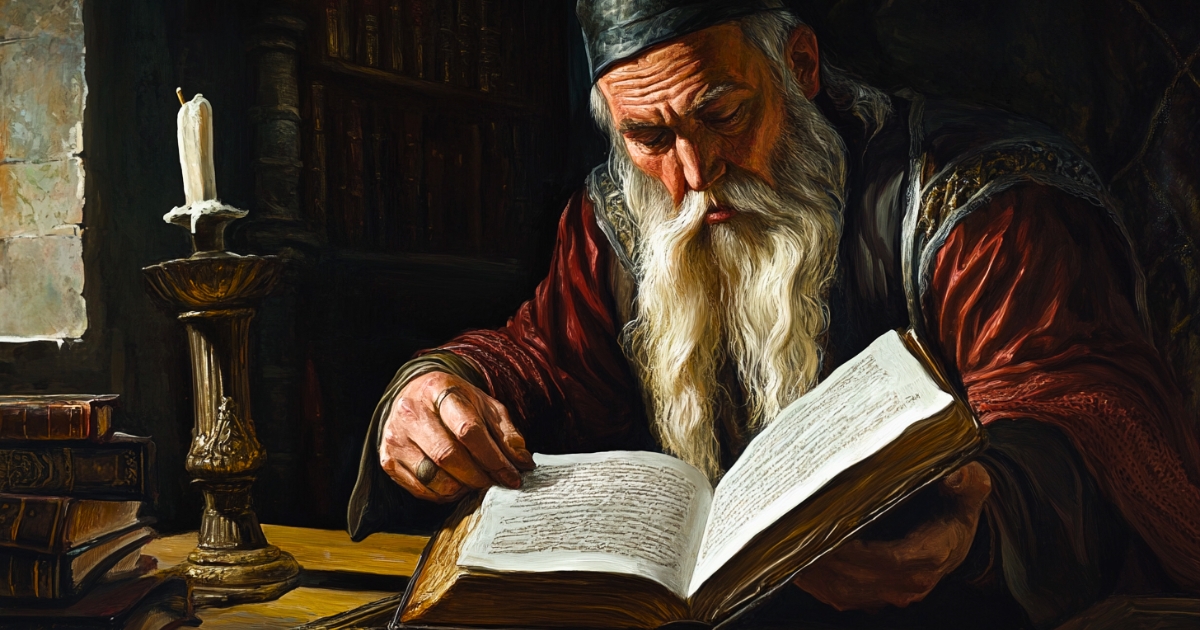- Gutenberg’s Revolutionary Invention: The Birth of Movable Type Printing
- The Gutenberg Bible: The First Large-Scale Printed Work
- Rapid Spread of Printing and Its Impact on Society
- The Development of Renaissance Culture and Movable Type Printing
- The Relationship Between the Reformation and Printing
- Comparison with the Modern Digital Revolution
- Gutenberg’s Legacy: Impact on Modern Society
- Conclusion: Movable Type Printing as the Beginning of the Information Revolution
Gutenberg’s Revolutionary Invention: The Birth of Movable Type Printing
In the mid-15th century, Johannes Gutenberg, born in Mainz, Germany, achieved an invention that would dramatically change human history: movable type printing. Compared to the previous method of hand-copying books, movable type printing made it possible to produce large quantities of books efficiently.
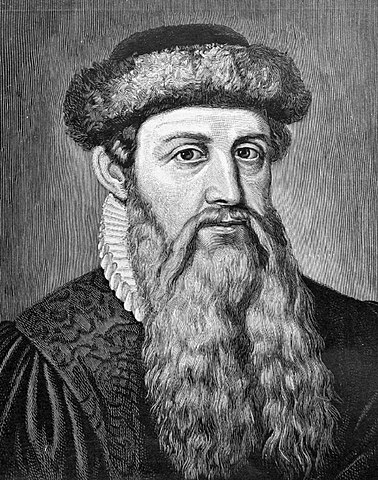
Portrait of Johannes Gutenberg, known as the inventor of movable type printing and a 15th-century innovator.
Gutenberg’s genius idea was the concept of “movable type,” creating individual metal letters that could be combined to form text. He produced durable type using an alloy of lead, tin, and antimony. Furthermore, he integrated all the necessary elements for printing, including the development of oil-based ink and the improvement of printing presses that could apply uniform pressure.
The Gutenberg Bible: The First Large-Scale Printed Work
The Gutenberg Bible, completed around 1455, proved Gutenberg’s technical prowess. It was the first large-scale book produced using movable type printing, and its beauty and precision astonished people of the time.
This Bible consisted of 1,282 pages, and it is said that about 180 copies were printed. While it took several months to complete a single handwritten Bible, Gutenberg’s method could produce 180 copies in a few months. This brought about a revolutionary change in the spread and dissemination of knowledge.
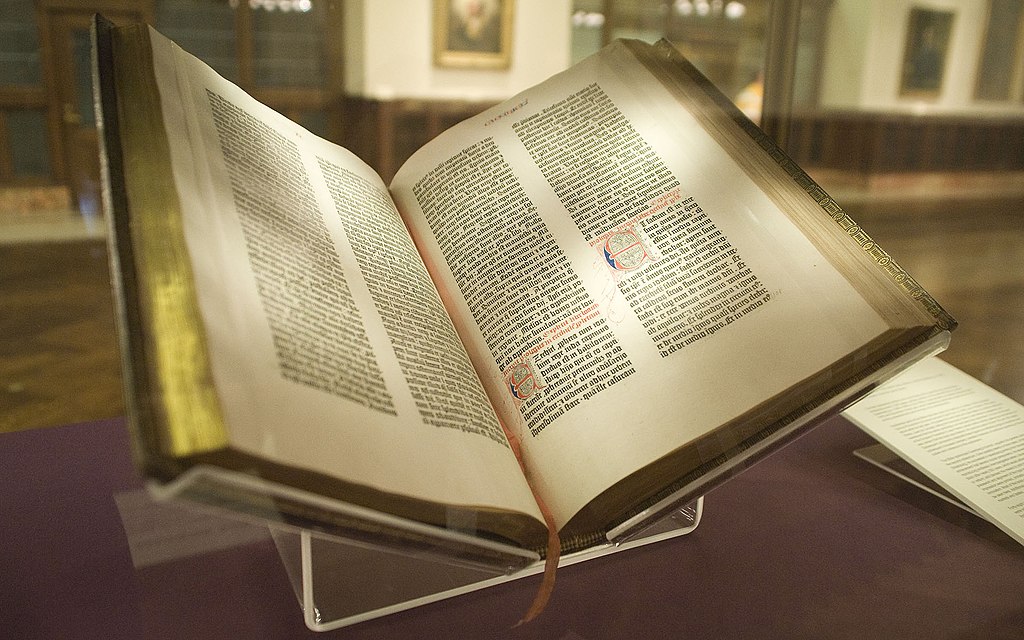
The Gutenberg Bible held by the New York Public Library. One of the first large-scale printed works, produced around 1455. NYC Wanderer (Kevin Eng), CC BY-SA 2.0
Rapid Spread of Printing and Its Impact on Society
Gutenberg’s invention spread across Europe at an astonishing speed. By 1500, it is estimated that about 250 printing houses were established in major European cities, producing about 20 million books.
This rapid spread dramatically changed access to knowledge. Information that had previously been limited to the elite became available to a broader range of people. This led to improved literacy rates, the spread of education, and the rapid dissemination of new ideas.
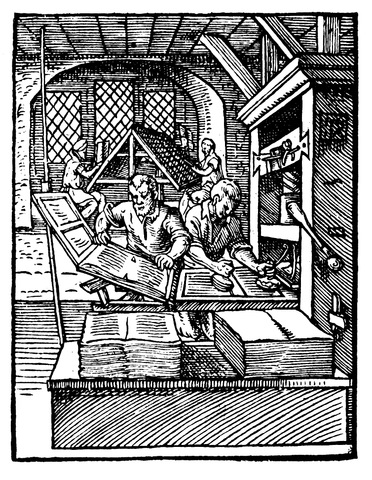
A woodcut depicting a printing workshop in 1568. It shows the printing press and people at work in detail, illustrating the impact of movable type printing on society. During this era, printing houses became centers of knowledge and information, playing a significant role in the spread of culture and ideas. The woodcut vividly portrays various stages of the printing process, including typesetters, press operators, and people checking completed prints. This suggests the emergence of new professions and specialized skills that developed alongside printing technology. By Jost Amman
The Development of Renaissance Culture and Movable Type Printing
The invention of movable type printing coincided with the Renaissance period. Printing played a crucial role in spreading classical literature and new scientific discoveries. For example, innovative ideas such as Copernicus’s heliocentric theory and Galileo’s observations spread rapidly through printed materials.
Moreover, the proliferation of maps and illustrated books promoted geographical discoveries and scientific understanding. These greatly contributed to the intellectual and cultural development of Europe.
The Relationship Between the Reformation and Printing
Movable type printing also had a significant impact on the Reformation. Martin Luther’s “95 Theses” spread rapidly across Europe thanks to printing. Additionally, the printing of vernacular translations of the Bible allowed ordinary people to read the scriptures directly, bringing about changes in religious authority structures.
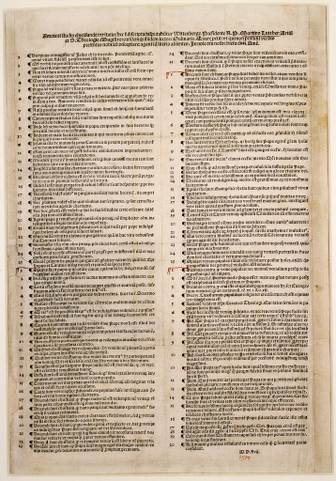
Martin Luther’s 95 Theses, which spread rapidly across Europe due to printing technology. By Martin Luther
Printing became a powerful means of spreading religious debates and new ideas, accelerating the progress of the Reformation.
Comparison with the Modern Digital Revolution
The transformation brought about by Gutenberg’s movable type printing is similar in many ways to the modern digital revolution. Both fundamentally changed the methods of producing, distributing, and accessing information, greatly influencing social structures and ideas.
Just as printing enabled mass production of books, the internet has enabled immediate and global sharing of information. And just as printing promoted the spread of new ideas and knowledge, digital technology is creating new forms of media and communication.
Gutenberg’s Legacy: Impact on Modern Society
Even today, more than 500 years after Gutenberg’s invention, the influence of movable type printing is deeply rooted in our society. Modern publishing industries, journalism, and education systems are all based on the development of printing technology.
Furthermore, the concept of democratization of information also originated from movable type printing. The foundation of modern internet culture, where everyone can access information and express their own ideas, can be said to have been laid in Gutenberg’s era.
Conclusion: Movable Type Printing as the Beginning of the Information Revolution
Gutenberg’s movable type printing was more than just a technological invention; it had the power to transform society as a whole. Its influence was wide-ranging, including the spread of knowledge, dissemination of ideas, and cultural development, accelerating the transition from the medieval to the modern era.
Reflecting on Gutenberg’s revolution is also important in understanding the modern digital revolution. The history of movable type printing eloquently tells us how information can change society and what role technology plays in human progress.
Gutenberg’s legacy continues to live around us today. His invention democratized access to information and knowledge, laying the foundation for human intellectual development. We, living in modern society, may be promoting further information revolutions standing on the legacy of this great inventor.
